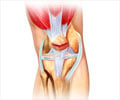Musculoskeletal disorders like chronic pain in the back, neck and other joints due to arthritis is extremely common, but difficult to treat.

The Stepped Care to Optimize Pain care Effectiveness study, or SCOPE, was a randomized trial comparing telephone-delivered collaborative care pain management versus usual care. SCOPE enrolled 250 Richard L. Roudebush Veterans Affairs Medical Center clinic patients age 18 to 65; each participant had at least three months of chronic musculoskeletal pain of moderate or greater intensity.
"Not only were chronic pain patients who received automated symptom management and calls from a nurse two times more likely to see their pain improve; patients who didn't have this interaction were two times as likely to get worse than those who had the telecare intervention," said Kurt Kroenke, M.D., who designed and led the SCOPE study. "Our results demonstrate both the effectiveness of the telecare as well as the risk of patient deterioration in the absence of systematic approaches to optimizing pain therapy."
A research scientist with the Richard L. Roudebush VA Medical Center in Indianapolis and the Regenstrief Institute and an Indiana University School of Medicine professor of medicine, Dr. Kroenke is an internist whose research and clinical practice focus on symptom management.
Both men and women were equally likely to benefit from telecare in the SCOPE study. The benefit did not vary by the age or race of the study participant. Although one-third of patients were on opioid therapy before the yearlong study began, few patients (4 percent) were prescribed opioids for the first time or had escalations in opioid dosage.
"Relieving Pain in America," a 2011 report from the Institute of Medicine, highlights the enormous functional and economic impact of musculoskeletal pain. According to the IOM report, pain is a leading cause of work disability and costs the United States more than $600 billion annually in health care and lost productivity.
Advertisement
• Automated symptom monitoring -- either by interactive voice-recorded phone calls (selected by 51 percent of intervention patients) or over the Internet (selected by 49 percent) -- was scheduled weekly for the first month, every other week for months two and three, and monthly for month four through 12.
• Pain management focusing on the use of non-opioid therapies by a nurse care manager/physician pain specialist team was provided throughout the course of the study. Non-opioid therapies included five categories of non-addictive pain relievers.
Advertisement
Source-Eurekalert














